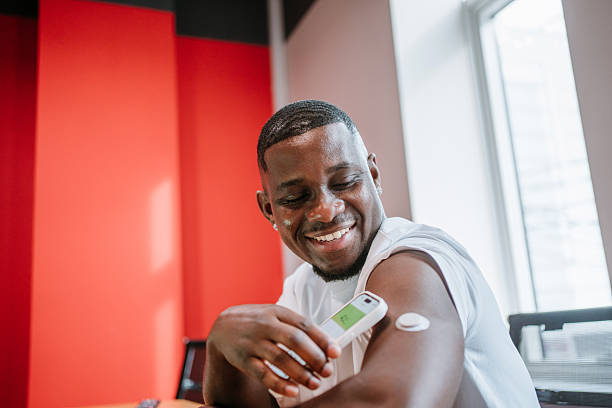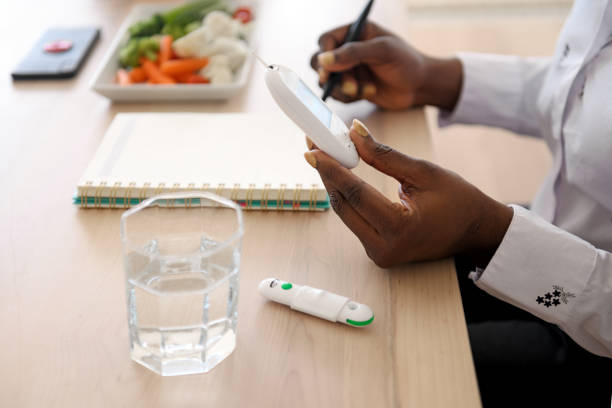
Let’s be honest. Sugar is delicious. If it weren’t, people wouldn’t crave it, and we wouldn’t eat all kinds of foods, treats, and snacks that we know we probably shouldn’t.
But there’s more to sugar than just the typical ‘high’ and ‘crash.’ For some people, sugar cravings represent very strong and potentially dangerous blood changes. If you are somebody who is susceptible to blood sugar swings, especially if you’re diabetic, it’s wise to be vigilant.
Do you notice changes in your mood or energy levels at night? Are you a diabetic who struggles with fluctuations, especially around bedtime when all you want to do is unwind and fall asleep?
In this article, we’ll cover everything you need to know. Whether it’s hypoglycemia or hyperglycemia, there are numerous effective strategies to keep your blood sugar levels stabilized when it’s time to catch those Z’s.
Understanding Nighttime Blood Sugar Swings
We all have blood sugar changes throughout the day; that’s natural. From meals to activities to stress levels, there are many factors at play. But what isn’t natural is when blood sugar increases or decreases significantly when you’re trying to go to sleep, or during your sleep.
Hypoglycemia at night occurs when your blood sugar decreases to a level that can pose health risks and trigger symptoms. This is usually measured at any level under 70 mg/dL. You may notice this is happening due to symptoms such as sweating, trembling, and confusion, but not always.
Sometimes, you’ll remain asleep even as your body goes through these changes.
If the hypoglycemia becomes too pronounced, it could cause seizures or unconsciousness. Many times, your body may try to overcompensate by morning, too, which can cause your blood sugar to rise dramatically. This is what’s called the “rebound effect.”
Then there’s hyperglycemia. This condition occurs when your blood sugar shoots up, usually over 180 mg/dL. If this happens at night, it may lead to intense thirst, constant urination, and problems sleeping. Over time, this can lead to long-term complications commonly linked to diabetes, like nerve damage, cardiovascular complications, and even diseases of the kidney.
But here’s the good news. You can take control of this situation. Whether it’s hyperglycemia or hypoglycemia, there’s a lot you can do.
RELATED: Hyperglycemia 101: Tips for Preventing and Treating High Blood Sugar

How to Manage Nighttime Blood Sugar Swings
One of the simplest ways you can manage these swings is through healthy snacking before you hit the sack. Just make sure it’s healthy! What you want is something that delivers a slow, steady release of energy. Look for foods that are filled with protein, healthy fats (like omega-3s), and complex carbohydrates that take longer to digest.
A handful of nuts, a slice of an apple, some whole grain toast with peanut butter, even a bowl of Greek yogurt with chia seeds – these are all good options. Whatever you do, stay away from processed foods with refined sugars.
Adjusting Evening Meals
While snacks are important, what may play an even larger role is what you have for dinner. Try to avoid heavy, high-carb meals, especially those that are overly processed. But don’t go too far to one extreme. If your meals are on the other end, and too light or low in carbs, they could trigger hypoglycemia. In other words, it’s all a balancing act!
Consider options that contain the following: lean protein, fiber-filled veggies, healthy fats, and, again, complex carbohydrates. You can look online for foods that have a ‘low glycemic index,’ but generally speaking, this includes fish like salmon and cod, meats like grilled chicken and turkey, and non-starchy vegetables such as broccoli, zucchini, and asparagus. Kale and spinach are also great, thanks to their high vitamin and nutrient counts.
And don’t miss out on healthy fats and whole grains, too. For fats, cook with olive or coconut oil, and consider foods like avocados and nuts/seeds. For your grains, foods like quinoa, wild rice, and sweet potatoes are ideal.
Timing Your Exercise
While eating healthy is critical, it can mean very little if you aren’t getting any exercise. Exercise is one of the most powerful weapons in your arsenal against blood sugar swings. But what matters as much as the exercise you get is when you get it.
With regular activity, you boost your insulin sensitivity, which means your body learns to handle sugar more effectively. Only one problem. If you work out too close to bedtime, your blood sugar may deplete, causing complications.
For physical activity, it’s best to do it earlier in the day, especially outside in the sun if the weather is good. Also, be mindful of the level of intensity. Moderate exercise done consistently is often better than intense exercise done intermittently. Overexercising can also disrupt blood sugar levels, leading to dangerous swings later at night.
RELATED: Diabetes or Not, Here’s Why You NEED to Know Your Glucose Levels
Using Continuous Glucose Monitors (CGMs)
Continuous glucose monitors (CGMs) are the way of the future, and they’re available today. With CGMS, you can track your blood sugar throughout the day, getting real-time glucose readings that allow you to respond right away.
They’re especially useful for detecting nighttime blood sugar fluctuations that you may not even notice. Thanks to these nifty devices, you can make proactive and reactive decisions, better understanding how your blood levels fluctuate throughout the day and night.
Just be mindful of the Somogyi effect, also known as “rebound hyperglycemia.”
We mentioned this briefly earlier, but basically, it refers to a compensatory mechanism in your body. When your blood sugar is low at night, your body will release hormones such as cortisol and adrenaline, a stress response. This then triggers the release of glucose, which can be sudden and dangerous.
As a result, you may wake up with extremely high blood sugar levels in the morning, leading you to falsely believe that your insulin dosage is too high.
If you’re not sure if the Somogyi effect is affecting you, don’t hesitate to contact your doctor. While managing nighttime blood sugar swings may be challenging, it doesn’t have to be impossible. In fact, with a personalized approach and some close monitoring, you can completely master your blood sugar.
Take it day by day (and night by night), and don’t get discouraged by hurdles and difficulties. With a proactive and informed management plan, you’ll be well on your way to a healthier, happier, easier life!









